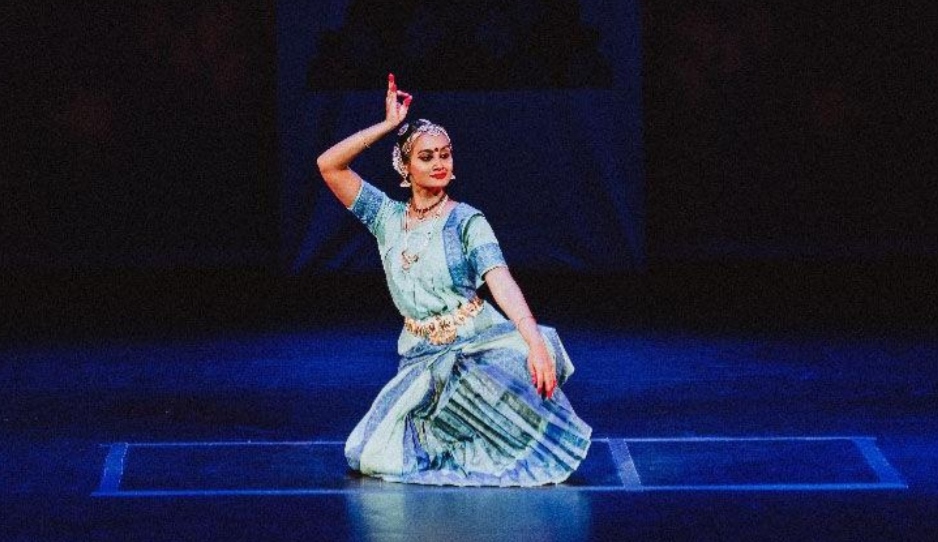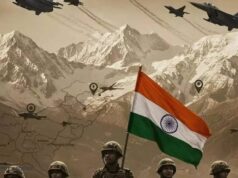Girmityas forgotten children of Bharat : Dancer Traces her Roots
A return to motherland India…

By
Kimberly Wallace
FAMILY HISTORY: Indian classical dance instructor and founder of the Adavallan Art Academy, Alana Rajah.
NOTE : Girmityas bound for Trinidad & Tobago, all those who boarded from Calcutta port were called Calcuttias and those who boarded from Madras Port were called Madrasis.
Here is a story of a descendent of a Madrasi who married a Calcuttia, traces her roots to India
A TIME to retreat, fast and reflect. This is what Diwali means to Indian classical dancer Alana Rajah. The founder of the Adavallan Art Academy usually spends the first half of the year preparing her students for their recitals, and while it gives her immense joy to see them perform at schools and local community Diwali celebrations, Rajah chooses not to perform, but opts instead to enjoy the solitude.
It is during those rare quiet moments that Rajah often reflects on her ancestral roots that have made her the woman, Hindu, Indian classical dancer and instructor she is today.
“For as long as I have known myself, I’ve always been grateful to my ancestors and have never shunned the fact that I am a Hindu. I found a great passion for dance within my religion and culture. I strongly believe that their existence traces back to even God himself. My ancestors have made my journey into adulthood comfortable, rich, inspiring, and full of motivation, even after so many generations. Their hard work, persistence, rebellion, unconditional love and strength is the reason I gracefully wear my hair with a centre partition, oil it every Sunday and pleat my sari with extreme love and care whenever I get the chance to honour their memory. I am never ever ashamed of it,” she says.
The traditions passed on by her ancestors are so valuable to Rajah that she felt it was important to try to discover her roots. To do so, she went to India—the home of her ancestors.
At the start of her quest to trace her family’s lineage, Rajah had very little information because names were either changed, misspelled or even forgotten, as a result her tedious research often led to dead ends. But Rajah refused to give up. With equal doses of faith and persistence, she was able to trace her paternal ancestors who were among a group of emigrants who moved from the state of Andhra to Madras and eventually boarded the ship at the Madras (now called Chennai) port. She also traced her maternal ancestors back to a group of Marwaris who boarded at the port of Calcutta (now called Kolkata).
Ancestors’ legacy
“Knowing first-hand of the struggle it was to find my direct ancestral roots made me appreciate them so much more and this solidified my courage to continue to stay true to my cultural beliefs, values and traditions so that generations after me can embrace them and be even freer to honour their roots and embrace their identity,” she says.
Rajah was the first of four generations in her family to return to her motherland.
“It is something for which I would be eternally grateful to my ancestors because it is without a doubt that their guidance and blessing took me on that journey. Now I am able to connect many lives in Trinidad to an art form (Bharatanatyam) that dates back even before the 20th century,” she says.
Life-changing experience
It is of little wonder that Rajah has perfected Bharatanatyam—one of the eight forms of Indian classical dance. Her passion for dance and this ancient art form in particular is intrinsically linked to her forefathers. Bharatanatyam belongs to the very state of Tamil Nadu where her paternal ancestors belonged and during the time of their existence it was where Shaivism (the worship of Lord Shiva) began flourishing under the Chola dynasties. “Lord Shiva is considered the deity of dance,” explained Rajah. Her experiences while in India changed her life and shaped the choices she made upon returning to Trinidad.
“When I visited Thanjavur, one of the temples where Bharatanatyam was hugely patronised by the Chola dynasty, I saw the most beautiful bronze murti of Lord Nataraj, donated to the temple by the Emperor, Raja Raja Chola himself. This bronze Nataraja was named Adavallan meaning “Dance Master”. This is now the name of my school,” says Rajah. “Experiences like this are what influences the type of person I am and how I treat my art form in Trinidad. The very name of my school can widen someone’s knowledge of a beautiful piece of south Indian history—a history brought to my awareness by my ancestors and the legacy they left behind.”
Rajah believes it is worthwhile to know one’s family history, she encourages others to trace their own roots and discover the many layers of their heritage.
“In Indian culture there is a beautiful introduction of a person by a title called their ‘gotra’. This refers to the unbroken male lineage of the Satparishis or the seven sages who appear throughout ancient Vedic texts. Which is why I believe that our ancestors trace back to even God himself,” says Rajah. “I think it is a beautiful experience to know one’s family history and I would encourage others to try to trace it. Knowing this can open our minds to something greater than us. It can give us direction, instil values and help us to accept that we are children of substance, value and importance, nurtured and guided always by our ancestors. With this, we can without a doubt lead better lives and enrich future generations.”




